WISHING YOU A HAPPY PESACH!
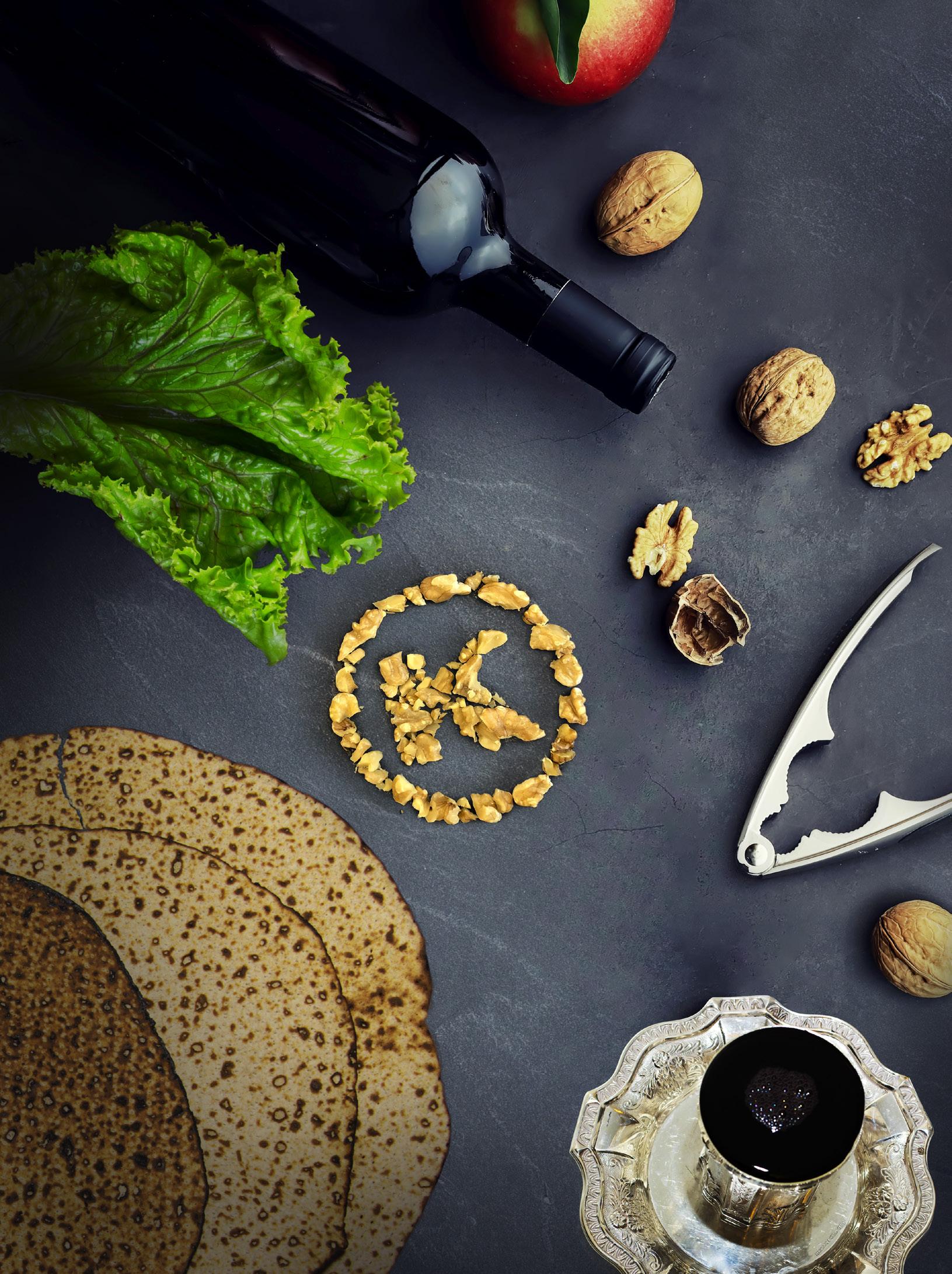
CERTIFIED SOUL NUTRITION NISSAN 5780 ה”ב פ”שת ןסינ
ןוא רשכ א חספ ןכעליירפ
Dear Reader,
As Pesach approaches we are commanded to recount the miracles that Hashem did for the Jewish people as he took them out of Mitzrayim. Our Chachomim tell us that there are two ways a person can recognize Hashem: one is through everyday miracles like the sun rising each morning and setting every evening, and the second way is through extraordinary miracles like the Ten Plagues and the Splitting of the Sea.
Today we don’t really get to see those big extraordinary miracles, so I believe that every once in a while Hashem sends us a reminder that He, and only He, is still in charge of everything that happens.
Just when people start getting a bit too comfortable with all of their accomplishments and feel like they are in control, Hashem sent the Corona (COVID-19) virus to turn the world upside down.
At ~ Kosher, the Corona virus has kept us on our toes. We waited with baited breath for updates from our CEO and Kashrus Administrator, Rabbi Levy, who was visiting factories in Singapore and Malaysia (and getting his temperature checked seven time in just one day before entering different facilities), and other Rabbinic Coordinators traveling to Europe, India and Indonesia, as well as our local rabbis in China who were filling in for other international rabbis who were unable to enter China. The dedicated staff at the ~ are giving kashrus all they’ve got, while rearranging flights, dealing with closed facilities and cancelled trips, and making sure kosher productions can continue.
At the ~ we take our responsibilities very seriously and as long as factories are producing products with the ~ symbol on the label you can rest assured that our rabbis will be visiting and monitoring the productions.
This year let the Pesach miracles remind us permanently that it’s Hashem who controls everything and let us merit to see the ultimate miracle of the coming of Moshiach speedily in our day.
Rabbi Chaim Fogelman Editor in Chief
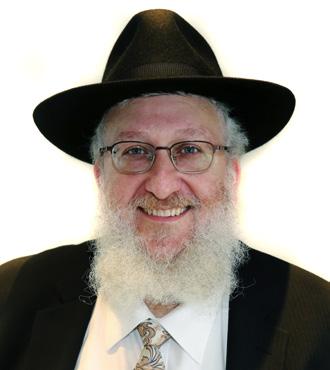
KOSHER SPIRIT | Pesach 5780 EDITOR-IN-CHIEF Rabbi Chaim Fogelman EDITOR Dina Fraenkel DESIGN Spotlight Design We welcome your comments, submissions and letters to the editor. Mail: 391 Troy Avenue, Brooklyn, NY 11213 Email: editor@kosherspirit.com © 2020. No portion of this publication may be reprinted without written consent from the publisher. 2 www.OK.org 3 HEALTHY SPIRIT 4 OH RABBI! 5 A CLOSER LOOK: INSTANT COFFEE by Rabbi Sholom Ber Hendel 6 RABBI ON THE ROAD with Rabbi Sholom Ber Hendel 8 YOUR KOSHER KITCHEN: THE BBQ by Rabbi Yakov Teichman 10 IS QUINOA KITNYIOS? By Rabbi Shlomo Klein 14 YOUR LOCAL GREENS: SUSTAINABLE FARMING MEETS KOSHER EATING by Miriam Herst 18 PESACH RECIPES 20 WHO’S BEHIND THE ~ Interview with Rabbi Sholom Ber Lepkivker 22 CHASSIDIC INSIGHTS 23 SOUL NUTRITION by Rabbi Chaim Fogelman
Chicken Soup
Chicken soup is undoubtedly a staple of Shulchan Orech and the Yom Tov seudos. Science backs what your mother has always told you—chicken soup is the Jewish penicillin!
Chicken broth strengthens the immune response to the common cold and can help prevent its spread. The electrolytes present in chicken soup can rehydrate better than commercial sports drinks.
Adding pieces of chicken breast to your soup increases protein while keeping fat and calorie counts down.
The vegetables commonly used in chicken soup are high in vitamins and anti-oxidants and help eliminate toxins from the body.
Both the steam and salt in the soup thin mucus caused by the common cold, and the heat of the broth dilates blood vessels and increases blood flow to reduce congestion.
Some studies have shown that consuming chicken soup improves the cilia (tiny hairs) in the nose, which can prevent additional germs from entering your body.
Chicken soup is particularly high in vitamin A and selenium, which support proper thyroid function and aid in new red blood cell production.
Studies have shown that chicken soup provides emotional comfort and lifts one’s spirits, helping one feel better mentally, physical and emotionally.
www.KosherSpirit.com 3
“I cut a hot steak with a milchig knife. What’s the status of my steak and of my knife?”
What is the status of the steak?
What is the status of the knife?
The knife requires Hagala.*
Was the knife used in the past 24 hours?
Is there dairy residue on the knife?
If you only cut one slice and the piece is very large—60× the volume of the blade, the piece is kosher, but the area that touched the knife must be removed and discarded.
Did you cut the steak into multiple slices?
Did you cut the steak into multiple slices?
Did you cut the steak into multiple slices?
The steak is not kosher
Is there dairy residue on the knife? No
The steak is kosher
If you only cut one slice and the piece is 60× the volume of the residue, the piece is kosher, but the area that touched the knife must be removed and discarded.
* A method of kashering with boiling water
If you only cut one slice and the piece is very large—60× the volume of the residue and the blade, the piece is kosher, but the area that touched the knife must be removed and discarded.
? O H RAB B I! (כ"ונו 'ז ףיעס ד"צ 'יס ד"וי ע"וש פ"ע)
?? O
H RAB B I!
Yes Yes Yes Yes Yes Yes No No No No No
4 www.OK.org
closer look
Instant Coffee
WHAT IS INSTANT COFFEE?
Instant coffee, which is also referred to as soluble coffee, is a concentrated drink made from brewed coffee beans. The resulting brew is spray or freeze dried into powder or crystals. Instant coffee dissolves quickly in hot water which allows for a quicker preparation time for the consumer

HOW IS INSTANT COFFEE MADE?
Coffee berries are harvested and the flesh of the fruit is removed. The seeds from the berries, which are known as coffee beans, are allowed to ferment and then washed, dried and shipped to the manufacturing facilities.
Different types of beans are blended together in the desired ratio, roasted, cooled, and then crushed into smaller pieces. The crushed coffee beans are cooked with hot water and the resulting liquid brew is concentrated in an evaporator to create coffee extract. The coffee extract can be sold as is or further processed into instant coffee through spray or freeze drying.

SPRAY DRYING The coffee extract is dried in a large chamber and heated with hot air causing the liquid to evaporate. The resulting powder is then sent to be agglomerated. In the agglomeration process the powder is heated with hot steam, which causes the coffee powder to clump together and form larger crystals which are easily dissolved in hot water.
FREEZE DRYING The coffee extract is frozen, then broken into smaller particles that are freeze dried under a vacuum causing the liquid to evaporate while the product is still frozen. The coffee is then ground and packaged. Freeze drying is a more expensive process and the finished product is higher quality.
Some manufacturers spray coffee oil (made by pressing roasted coffee beans) on the instant coffee to add to the coffee aroma.
DECAFFEINATED COFFEE
The caffeine is removed from the coffee beans prior to the roasting process. The beans are heated with hot water and
steam to allow the caffeine to be extracted. They are then processed with methyl chloride, water, CO2, or ethyl acetate to remove the caffeine, after which the coffee beans are dried back to their original moisture level. After the decaffeination process, the beans are processed using the same methods listed above.
IS INSTANT COFFEE KOSHER?
There are a few possible Passover concerns with instant coffee:
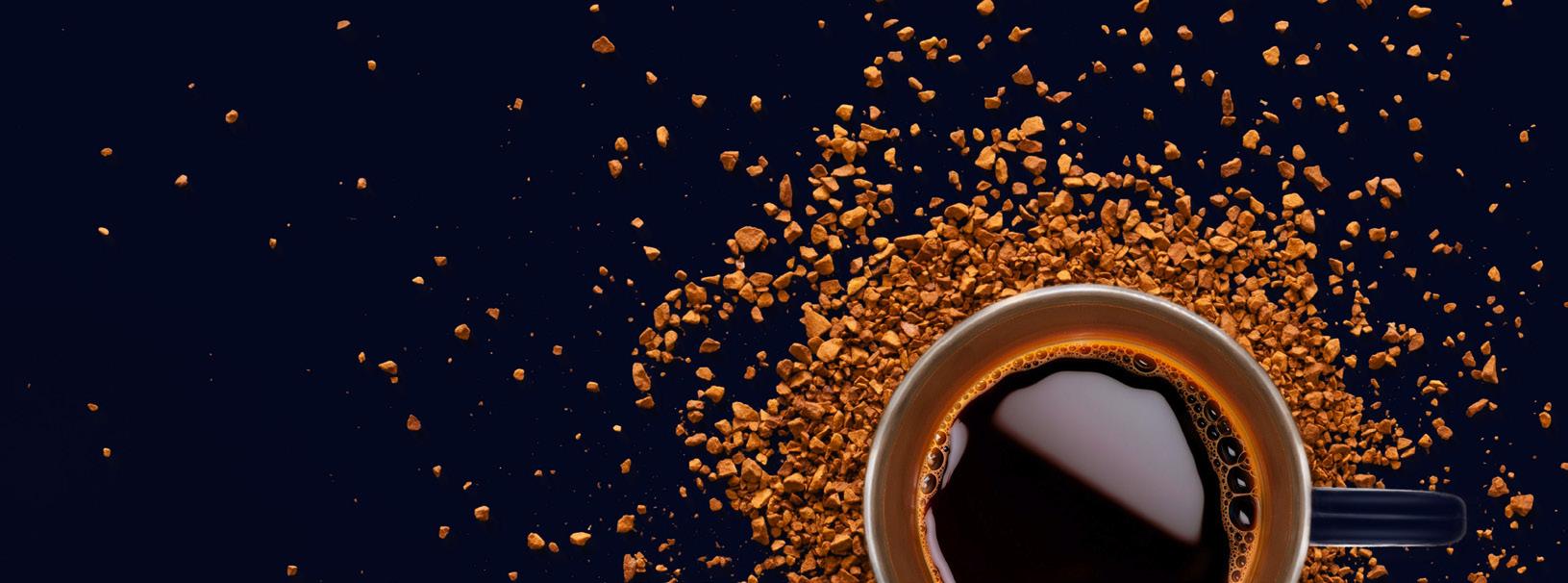
One of the decaffeination methods uses ethyl acetate which can be derived from chometz. Another concern is the grain based coffee replacements and additives that are used to produce cheaper coffee products. Even if the specific product is not made with any of these ingredients, it may still be processed using the same equipment.
Most coffee processing plants have their own equipment that is dedicated to coffee products, but some companies use outside manufacturing plants that may use their equipment for other products, which can be a kosher concern for year round as well.
Flavored instant coffee and instant coffee mixes, which are blends of instant coffee with flavors and/or additional additives, have additional concerns for year-round and Passover kashrus due to all of the additives.
~ Kosher recommends purchasing kosher certified instant coffee for year-round use, and kosher for Passover instant coffee for Passover use. ~
a
Rabbi Sholom Ber Hendel, ~ Rabbinic Coordinator
www.KosherSpirit.com 5
& Germany Switzerland
with Rabbi Sholom Ber Hendel
Usually when I travel for kashrus, I have a packed schedule and don’t have much time to go sightseeing; however, I do get to interact with the different cultures and see beautiful scenery, interesting architecture of the buildings and homes, as well as the cobblestone streets, originally designed for horses and buggies
that are now used for regular cars… sights that are usually missed by the typical tourists.
Traveling in Germany is a juxtaposition of emotions, vacillating between remembering the devastation of the local Jewish communities during the Holocaust, and pride and awe at the current surge of Jewish life and kosher food on German soil.
One of the memorable plants that I visited during this trip was the iconic Toblerone facility. The Toblerone products have been produced in Bern, Switzerland since the early 1900s and

6 www.OK.org
RABBI SHOLOM BER HENDEL
certified by the ~ for many years. While they have upgraded their machines over the years to cutting-edge, modern equipment, they still have some of the original manufacturing equipment on display, as you can see in the picture. It was fascinating to see the way they used to produce chocolate over 100 years ago.
A lot of my traveling is done through industrial cities that don’t have active Jewish communities; however, on this trip, I got to spend a day in Hamburg – a city with a thriving Jewish community with three daily minyanim at Chabad of Hamburg. Interestingly, Chabad of Hamburg is located in a house that was owned by two Jewish families before the Holocaust and was recovered by Chabad of Hamburg.

On my way to Chabad of Hamburg, I passed through the central Hamburg train station. I learned that this exact train station was used by Hitler, ym”s, when he traveled to Hamburg with the intention of wiping out the Jewish people. It’s amazing to see that only a few blocks away is the center of a beautiful and growing Jewish community.
Through incredible Hashgacha Pratis, while visiting Chabad of Hamburg, I met IDF Chaplain Rabbi Touboul for the first time, not knowing that he had a prior connection to my family. 13 years ago, on Chanukah, my brother Levi a”h, was traveling to army bases and checkpoints near the Egyptian border on an outreach trip to spread the light of Chanukah. Tragically, the van was involved in a terrible car accident and my brother, along with a two of his friends, passed away, never making it to the army base they were scheduled to visit. Rabbi Touboul was the chaplain that was waiting for my brother at the base that Chanukah. He shared how difficult it was for him and the rest of the soldiers to hear about the accident and how hard they worked to keep the Chanukah spirit alive, in honor of my brother and his friends.


4 days travelling
8,370 miles flown
4 flights
729 miles driven
10 cities visited
10 facilities visited processing chocolate, coffee, cultures, enzymes, and pectin.
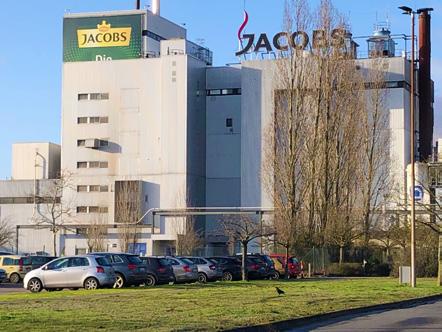
by the numbers
Chabad of Hamburg
Toblerone Machinery
Rabbi Hendel & Rabbi Touboul
www.KosherSpirit.com 7
Jacobs Coffee
Kosher Kitchen your The BBQ
By Rabbi Yakov Teichman, Rabbinic Coordinator
Spring is in the air and everyone is looking forward to spending more time outside. This, of course, means its BBQ season! Let’s explore the common kashrus issues facing the kosher consumer.
Fish and Meat
Halacha says, as stated in Shulchan Oruch, Yoreh Deah 116, that one may not cook or eat fish and meat together. We are even required to eat or drink a neutral food between the eating of fish and meat. One is also not permitted to have them together on the same grill even though they are not touching.
Can fish and meat be cooked on the same grill one after another?
Some have a minhag to use dedicated keilim, but most do not. However, even for those who don’t require dedicated keilim, the meat keili must be completely clean before using it to cook fish, or vice versa. When it comes to a grill it is very difficult to clean it perfectly, therefore one would not be able to use it for both fish and meat. Nevertheless, if one would want to switch from fish to meat or
8 www.OK.org
vice versa on a permanent basis, it could be done after the grate is completely cleaned. If one has the ability to purchase a second grate to designate for fish, it would be the easiest way to ensure completely separation of fish and meat.
Many kosher marshmallows contain fish gelatin, so one should be very careful not to roast them over a barbeque while cooking meat.
Kashering for Pesach
Before a utensil is kashered we have to determine the way that the absorbed “taste” ( תועילב ) has entered into the utensil in order to know how to kasher it. The Torah tells us that kashering of equipment needs to be done the same way the original food was absorbed, “k’bolo kach polto ”. This means, that if the taste was absorbed via fire, the vessel needs to be kashered with fire, and if it was absorbed via hot water, it needs to be kashered with hot water. When kashering with water (hagalah) the utensil needs to be perfectly cleaned and unused for 24 hours before kashering. However, when kashering with libun gamur (fire) one doesn’t need to wait 24 hours and it does not need to be cleaned before because the libun gamur will clean it. There is a third level of kashering called libun kal (when the taste absorption came through indirect heat) and for this one needs to clean the utensil and wait 24 hours.
A barbeque clearly requires kashering with fire (libun gamur). Libun gamur requires the equipment to be heated to about 900℉. The simplest way to kasher via fire is to place the grate in an oven and put it through a self-clean cycle. It is also possible to completely cover the grate with coals on both sides (i.e. sandwich it in coals) and leave the coals until they burn out.
To kasher the cavity/housing of the grill: Gas grill: one should clean it well and then turn on the grill to the highest setting for 1 hour.
Charcoal grill: Fill it with coals and light the grill. Leave the grill lit until it burns out by itself.
A blowtorch can also be used for this type of kashering but it is only suggested for those with experience in handling a torch. The part of the grill cavity/housing which is level with the grate must also be kashered with libun gamur, this is due to the likelihood of food having touched that area during barbecuing. This is done either by lining the outside rim with coals or it can be done with a blowtorch.
Kashering a Public Grill at a Park
Park grilling is a fun family pastime, enjoyed by young and old alike. The most convenient way to enjoy a barbeque in the park would be to use the park grills; however, they are obviously not kosher. As mentioned earlier the grill needs to be kashered by libun gamur which is 900℉. This is possible (and thrills pyromaniacs) by lowering the grill to the lowest level and filling the cavity with coals as well as covering the top of the grill with coals. The handles should be cleaned and boiling water poured over them. The only issue with this method is that it takes a good few hours.
What about using your own tabletop grill?
The park ranger (rightfully so) will not allow grilling on the wooden picnic tables, so what about placing them in the non-kashered public grill? A basic principle in transferring of taste absorption is that taste does not transfer between two utensils. For example, if you have a dairy pot with chocolate milk cooking on the fire and it is touching a pot of meatballs on the fire there would be no transfer of taste (although this is not recommended due to splashing, etc). Therefore, you can take aluminum foil and cover the grill and then place your grill on top of that. It is best to use multiple pieces of foil, so that in the event that a piece of foil tears, you will always have a double covering. Happy grillin’!
www.KosherSpirit.com 9
IS
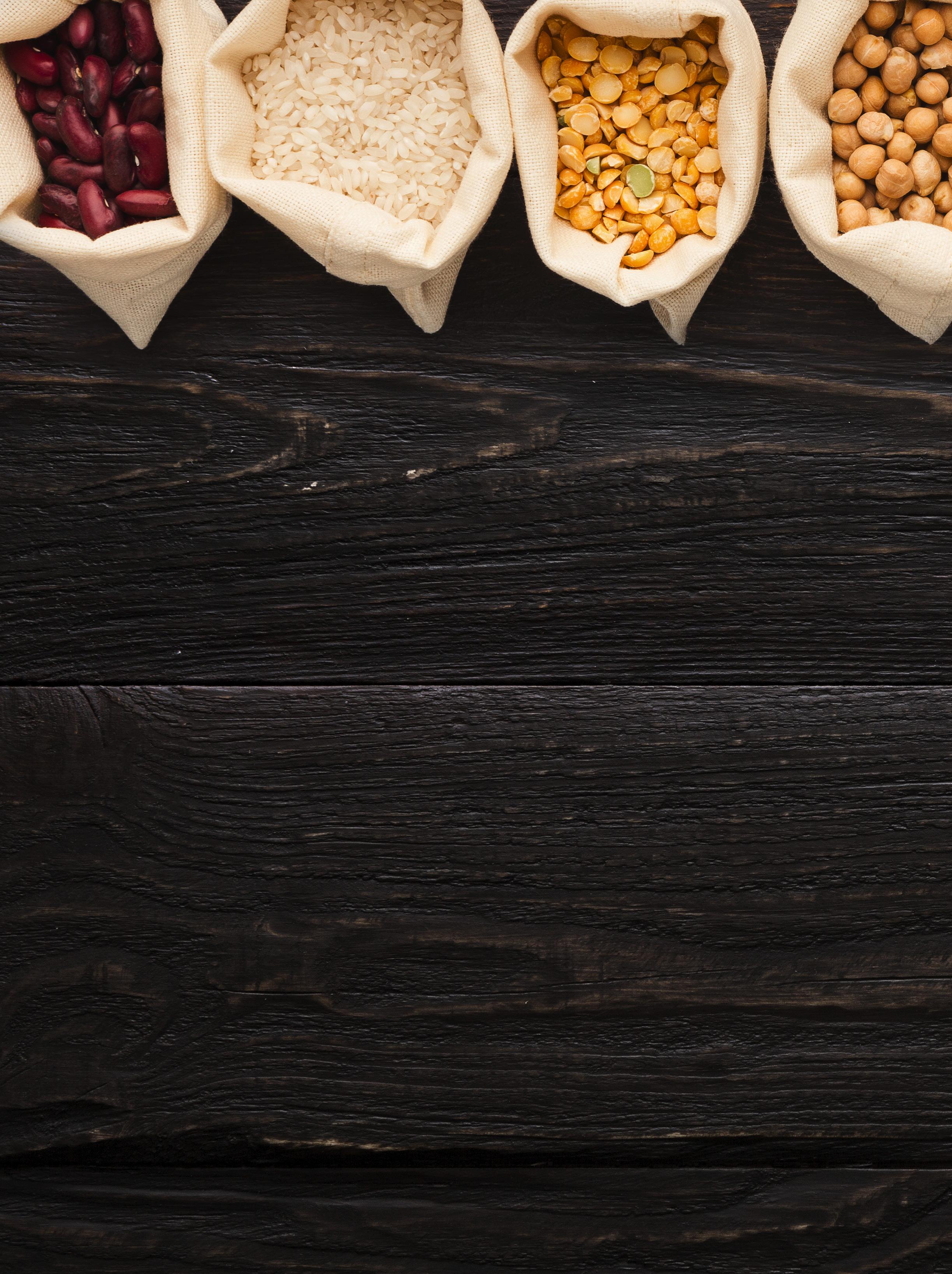
Q q U INOA Kitniyos? 10 www.OK.org
By Rabbi Shlomo Klein, Rabbinic Coordinator
People are always on the lookout to diversify their Pesach menu with healthy food choices. Quinoa, rich in protein, fiber, vitamins, and minerals, would seem to be a perfect solution. Even men, facing more than a week of eggs and potatoes, might consider giving quinoa one more chance.

Rishonim discuss the merits of an established minhag to refrain from eating kitniyos on Pesach. In practice, most Sephardic communities follow the psak of the Bais Yosef (O.C. 453:1) that kitniyos is permitted, whereas Ashkanazi communities follow the psak of the Rem”a that kitniyos is prohibited.
Kitniyos is loosely translated as legumes. However, the minhag includes several species that are not botanical legumes (e.g. rice, buckwheat, and mustard), hence, Poskim debate the kitniyos status of many types of foods; most recently, quinoa.
The Rishonim give two reasons for the prohibition of kitniyos. First, because of the similarities to the five chometz grains (wheat, barley, rye, spelt and oat) confusion can occur. Cooked dishes made from kitniyos appear similar to those from the five chometz
grains. Furthermore, kitniyos are often ground into a flour that can easily be confused with chometz flour. Finally, kitniyos are often grown in fields adjacent to those in which chometz is grown (and processed on the same equipment or stored together) and the kitniyos and chometz can easily mix together.
Food from the New World
Rav Moshe Feinstein zt”l (O.C. III: 63) was asked if peanuts are considered kitniyos since they are similar to peas (peanuts are actually legumes) and are commonly ground into flour. Rav Moshe responded that when the Rishonim gave the two above mentioned reasons, they did not intend to automatically add to the list newly discovered foods that have similar characteristics of kitniyos. Rather, the minhag only applies to those species that were available in Europe at the time that the minhag was instituted. Case in point is the fact that potatoes are not considered kitniyos, although bread and cakes made from potatoes looks strikingly similar to those of the five chometz grains, and that is because potatoes were not yet present in Europe when the minhag was established.
As to the second reason, that chometz grains tend to mix with kitniyos, Rav Moshe points out several types of seeds, such as anise, elainder (coriander) and
www.KosherSpirit.com 11
kimmel (caraway, cumin, or fennel) that the Rem”a considers as non-kitniyos, although these seeds are prone to be contaminated with wheat. Indeed, the Poskim (Mg”a and Ta”z) caution that they must be checked diligently before use. Apparently, such contamination was not common at the time that the minhag was established, and therefore these seeds did not make it on to the kitniyos list. Rav Moshe concludes that since peanuts were not present in Europe at the time of the Rishonim, they are not considered kitniyos.
The difficulty with Rav Moshe’s approach is the fact that maize (AKA corn) arrived in Europe at the same period potatoes did, and nevertheless all agree that corn is considered kitniyos.
In a previous issue of Kosher Spirit (Spring 2009), the legendary Rabbi Zusha Yosef Blech Z”L explained why corn was the only new food that made it onto the kitniyos list: “While the common name for maize is corn, the origin of the word corn is quite different. In the Americas, it refers to maize, in Scotland to oats, and in Germany to wheat or rye. Yiddish speakers are similarly prone to this confusion, since they often use the term “korn” to refer to grain. It seems, however, that the popularity of corn – and its resulting assumption of this nickname – was sufficient for the minhag of kitniyos to extend to this new grain.”
In conclusion, after much consideration and lengthy discussions with leading Poskim, and since quinoa is not remotely similar to the five chometz grains and was not present in Europe at the time the custom was established, the ~ considers quinoa as non-kitniyos. However, it is important to note that quinoa needs special kosher for Pesach certification, because quinoa seeds and flour are likely to be processed on the same equipment as the other five grains (especially with oats since both are gluten free). Therefore, only a reliable kosher for Passover supervision will guarantee that there are no actual chometz concerns. ~
Is Cannabis Kitniyos?
While discussing kitniyos oils, the Rishonim (Trumas Hadeshen, 205 and Mahari”l, 25) list “kanbus” oil as kitniyos. What is kanbus? The Radba”z (Kla’im 5:19) describes kanbus with the following: “It is intoxicating and people claim it makes them happy.” Accordingly, products made from the cannabis seed, like hemp oil or hemp milk are obviously kitniyos. On the other hand, products made from of the cannabis leaves, stalks or flowers (like CBD oil, hemp extract, terpenes, or marijuana - where legal, of course) would technically not be kitniyos. However, these products are commonly extracted and processed with alcohol and likely to have other Pesach sensitive ingredients blended in; therefore, as is the case with all processed food, it must be certified for Pesach by a reputable kashrus agency.
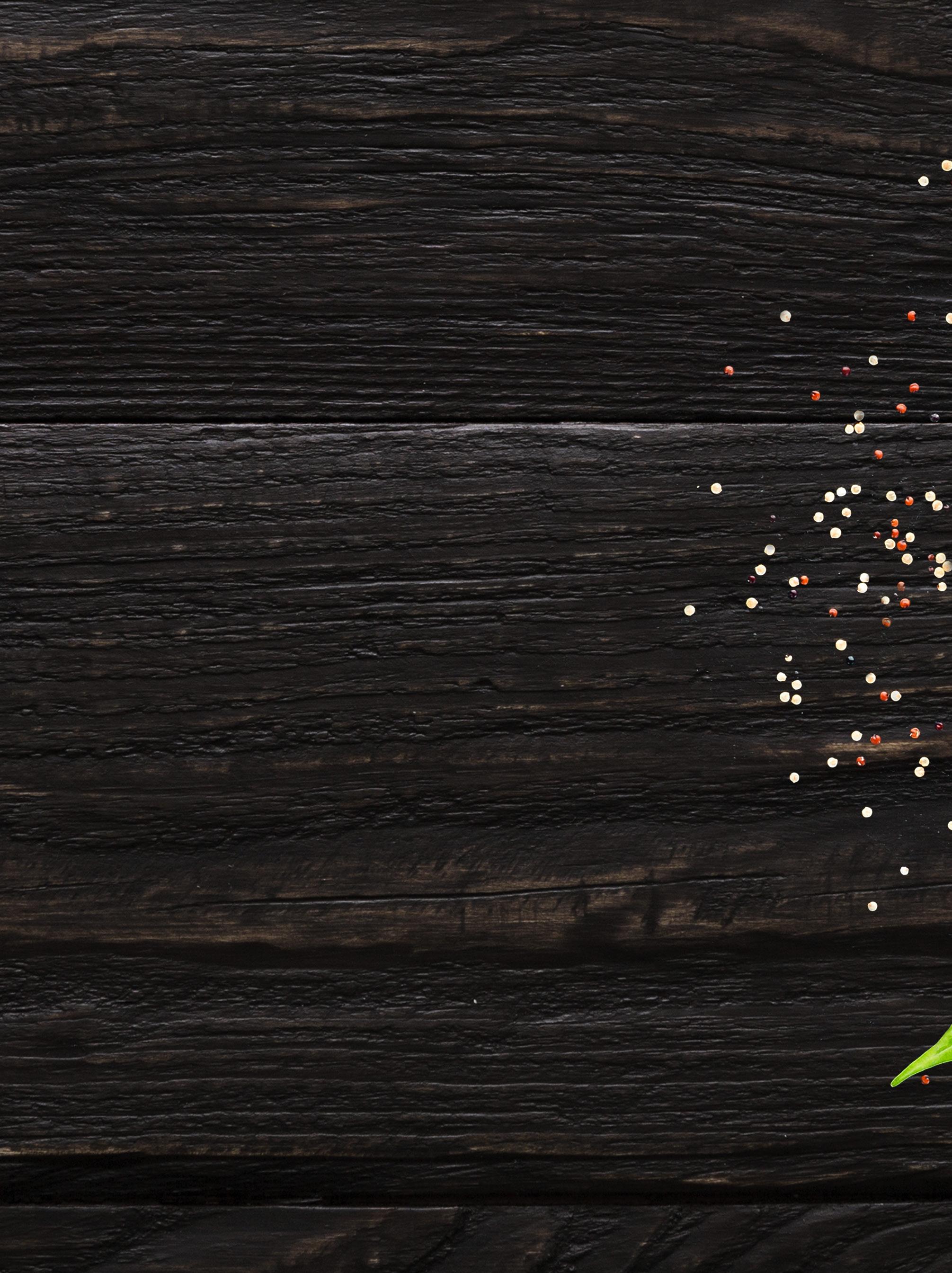
12 www.OK.org 12 www.OK.org
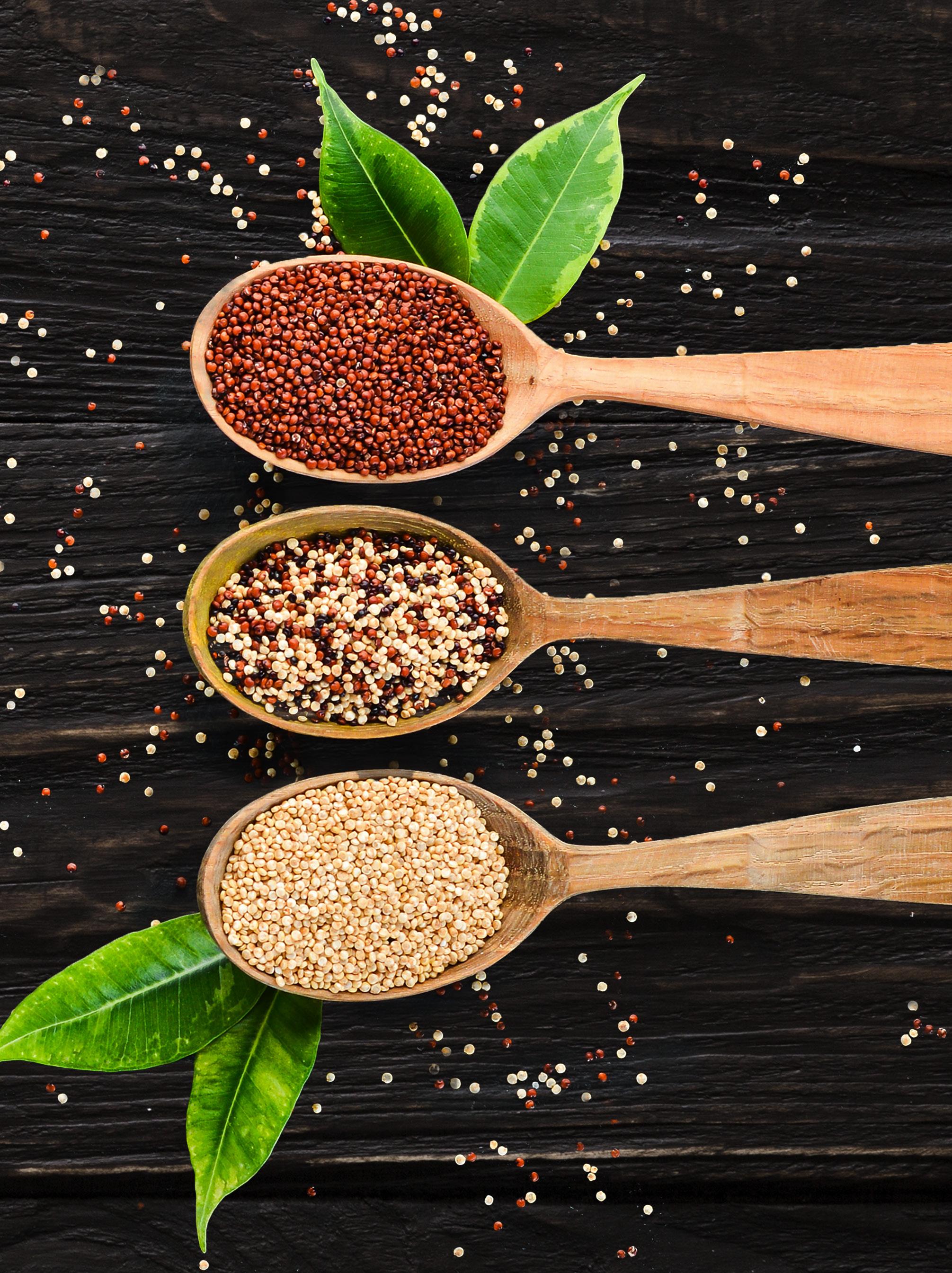
www.KosherSpirit.com 13 www.KosherSpirit.com 13
MEETS KOSHER EATING: Sustainable Farming Lalique






HOW YOUR LOCAL GREENS IS PAVING THE WAY FOR MORE ACCESSIBLE HEALTHY EATING
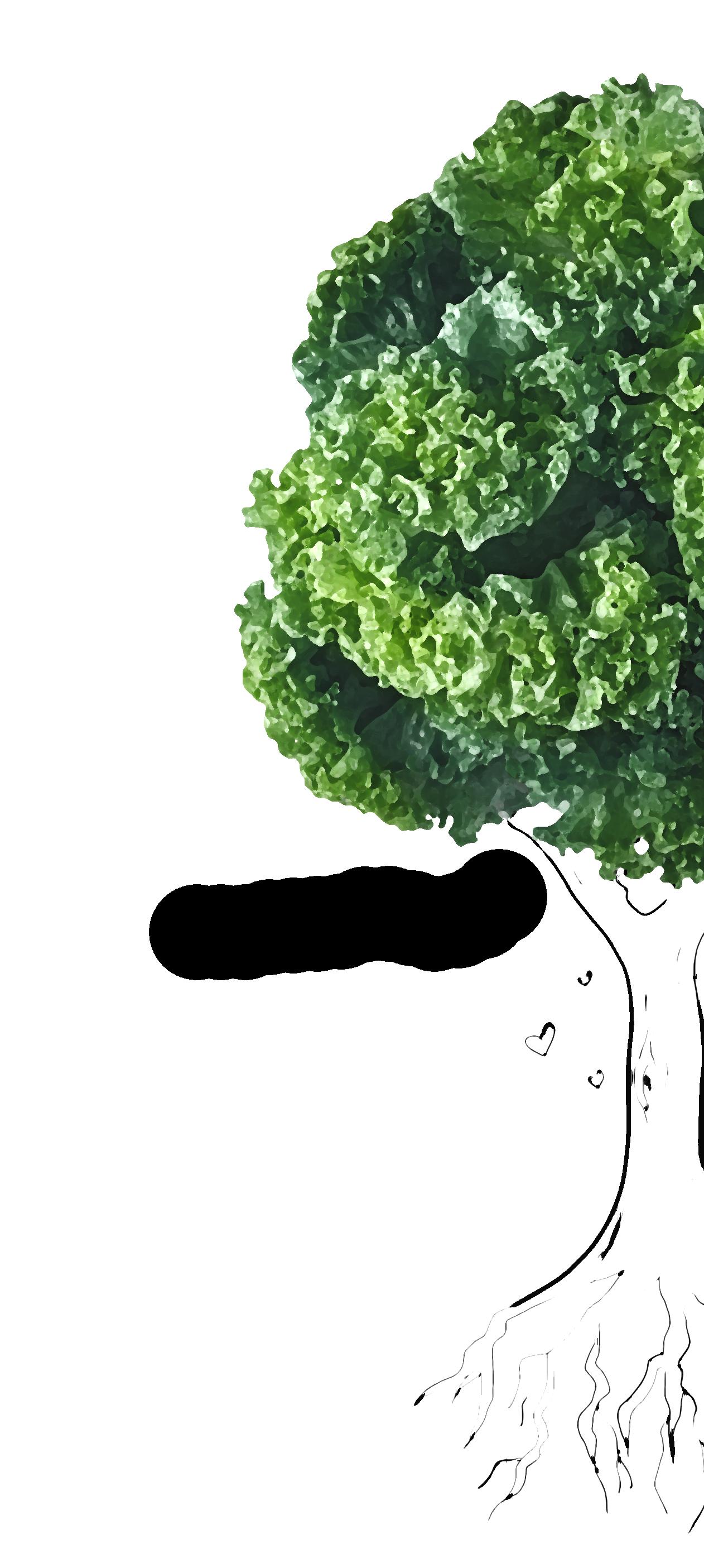
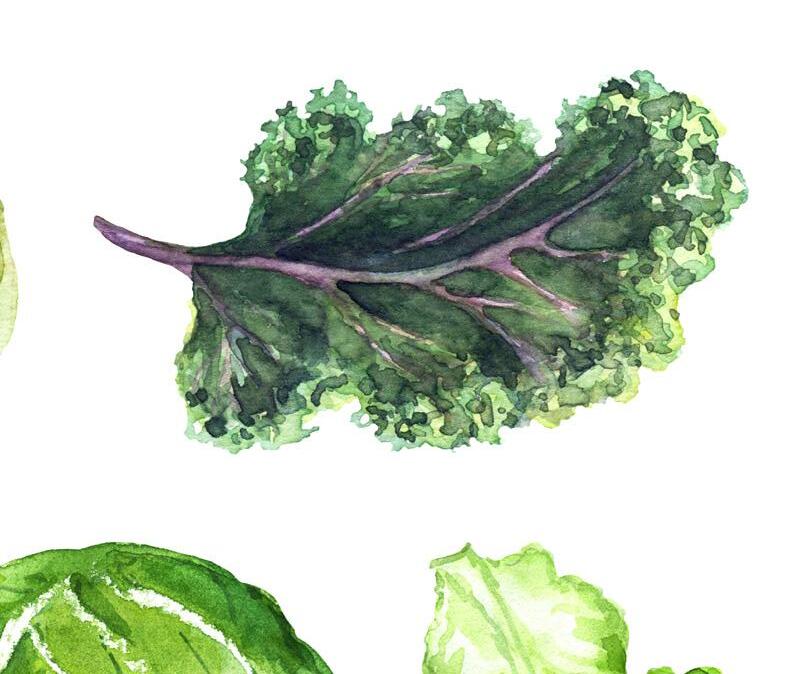
Xandra Codex
GreensMicro
BY: MIRIAM HERST





WHAT DO YOU GET WHEN YOU CROSS KOSHER EATING WITH SUSTAINABLE FARMING?


The answer is twofold: you can reallocate the hours you usually spend checking your greens for insects while supporting a company that’s earthconscious, intent on giving back to the community, and committed to making kosher greens more easily accessible. Your Local Greens is a ”lettuce manufacturer” in Burlington, North Carolina which uses hydroponic technology to produce plants that are grown in a safe, clean, and controlled atmosphere. Because the plants are produced in a controlled environment, there is no need for pesticides, resulting in a product quite literally grown for kosher eaters who are used to spending hours squinting over heads of lettuce checking for insects. This headache is particularly challenging during Pesach, a holiday that requires triple the preparation and a steady stock of lettuce available for every meal and Seder1. It’s also the ideal partnership for America’s leading kashrus organization who is making real headway in their efforts to make kosher greens more accessible.
So, how did a startup hydroponic farm in North Carolina become the pioneer in cleanly grown kosher greens? Like many good stories, it includes a Chabad house, a group of people determined to make change, and a whole lot of hard work. In partnership with “Let My People Eat,” a podcast about kosher nutrition that aims to demystify how to stay healthy while maintaining a kosher lifestyle, we are bringing you the story of Douglas Calaway, the CEO, and co-founder John Battle, of Your Local Greens, and the legacy they are creating that is impacting people from all walks of life.


Calaway is a self-described serial entrepreneur and you only need to talk to him for a minute to hear that his passion for his work is rivaled only by his love for his family and community. After starting several companies over the years, he set his heart on creating Your Local Greens, a business that would enable his son who was dealing with a bipolar diagnosis to support himself long after Calaway and his wife weren’t around to care for him.
“We moved to North Carolina about five years ago and I ran into John Battle who is also a serial entrepreneur and has a son with mental health issues,” Calaway recalls. “As a country, we ignore mental health and we think it’s going to go away and it’s not. So, we said, why don’t we do something about it.
“All of the original folks [investing in the company] had family members with mental health disabilities in one form or another. John and I put the money together and in January of 2018 raised the initial funds we needed to go into an old warehouse in Burlington, North Carolina. It took us about ten months to build it out. In October of 2018, we started growing.”
www.KosherSpirit.com 15
1. There is a Halachic debate over whether hydroponic lettuce can be used as chazeres for the Pesach Seder. See https://www.ok.org/kosherspirit/spring-2010/maror/
Two months later, in December of 2018, Calaway and his staff decided to apply for the Good Agricultural Practices certification from the USDA. A stag gering 80% of the farms in the United States can’t pass that test but the USDA gave Your Local Greens a perfect score. Knowing they would be seeing more of these types of indoor facilities, they decided to use Your Local Greens as the

“We have a unique way of growing,” Calaway describes. “We grow in a sanitary environment and as a result we don’t use pesticides or herbicides so we don’t have to wash our products. The shelf life of our greens is 3-4 weeks.”
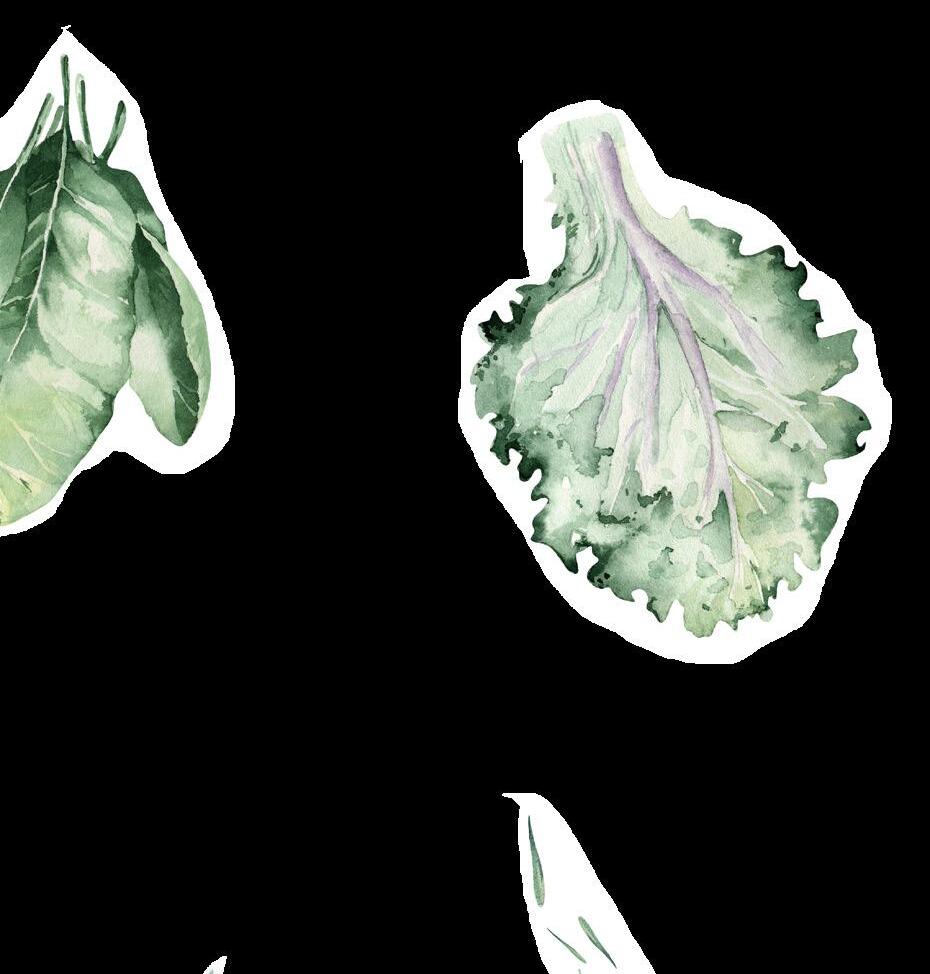
Sheldon Hamburger, VP of Business Development and Strategic Advisor of Your Local Greens, belongs to the local Chabad and he asked the rabbi there to come look at the factory to see about certification. “We looked around and realized that ~ Kosher was the one to go with,” Calaway notes. “They’re the most recognized by most Jewish folks with respect to kosher certifications,
“We had ~ Kosher come in and they were awesome to say the least. They’re doing it right. Within two weeks, we had our certification. What they like about us is that we don’t have a business where we change our basic process just to make our product kosher. We do it that way with all of our stuff. We get the things done the way they’re supposed to be – and that’s our business philosophy.”
90% of the company’s investors have a family member who has an intellectual disability and 70% of the company’s workforce are people with intellectual disabilities who are paid a living wage at “Your Local Greens”.


“All of us who have a family member with an intellectual disability worry about what’s going to happen to them when we’re gone because we’re their caregivers in a lot of respects,” Calaway says. “We’re trying to make them independent, so their family members don’t have to worry about them. So, we work this out with the state – the state interviews them and works with them and presents us with a few candidates. It isn’t like anyone does any one thing – everyone works together as a team in various stages of the process. When we’re done here, we’ll probably employ 25-30 of these folks. And we’re going to build quite a few of these so at the end of five or six years we’ll probably have employed over 600 folks who have intellectual disabilities all around the US.
“This is a legacy for me and a lot of the other folks. Two years ago, my son took his life. This means a lot to a lot of us…we’re not alone. I’m asked to talk throughout the state and before I start I ask how many folks in the room have a family member who suffer from mental illness and a third of those present raise their hands. Hopefully, I can prevent at least one other person from tak ing their life because they found something that was meaningful to them and then their family members don’t have to worry about them.”
Jill Sharfman, the founder and co-host of the “Let My People Eat” podcast and a board certified holistic nutritionist, notes just how important it is for the Jewish community to be including more greens in their diet. A 2016 study supports the theory that caloric intake on Shabbos is a contributing factor to obesity within the American Orthodox Jewish community. Sharfman has
16 www.OK.org
some suggestions for how the community can incorporate more greens into


“Since we can’t eat challah on Pesach, you can use lettuce to make a wrap for your chicken salad instead of matzah,” Sharfman suggests. “You can also add leafy greens to your soups and use spiralized zucchini to make a vegetable spaghetti. Try finishing off the dish with marinara sauce and garlic for some of that classic pasta flavor. You can also try a pesto or spinach artichoke dip instead of one that is mayonnaise-based and serve with a plate of cut up veg-
It’s important to consider a greens-focused diet during Pesach in particular when larger meals are the norm. Adding more greens into your diet can help you feel fuller while allowing you to simultaneously include more nutrients into your meals. Leafy greens, broccoli, and cauliflower are nutrient powerhouses; they are rich in Vitamin C which helps build immunity, high in Magnesium, Calcium, and Vitamin K which help maintain bone health, and help you structure a diet that’s full of fiber. This will lend towards feeling fuller for longer and will help you keep your blood sugar stable. Leafy vegetables are also high in antioxidants which aid in fighting inflammation and disease, in addition to iron to help combat anemia, a common condition among pregnant and lactating women.
Your Local Greens has a current customer demand for about 20x their production capacity. They are in the process of raising the funds to expand their capacity to meet that current and any future demand. Meanwhile, the company is committed to maintaining the highest kashrus standards and creating a product that everyone can benefit from. Their ongoing relationship with ~ Kosher is sustained by annual visits by Rabbi Yakov Teichman of the ~, monthly inspections at the facility, as well as the delivery of monthly samples, along with random product checks from produce purchased in stores.
“Rabbi Teichman is a sweetheart,” Calaway says. “He is such an advocate of what we’re doing and vice versa. He realizes that we’re more than just a supplier wanting to get into this industry – we want to help people and he appreciates that.”
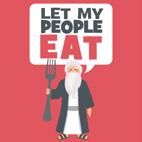
“The basic checking procedure that most mainstream organizations are doing is similar, give or take,” Rabbi Teichman explains. “Usually, we take the fruit or vegetable, wash it – typically with some sort of soap – and then we filter the water. We can assume that any insects on the produce will come off in this process and when we filter out that water, we can see whatever dirt or insects are in the product.”

When there’s a kosher certification that says that every product is insectfree, the ~ needs to continuously monitor the facility to ensure that there are no issues throughout the year. Since the products are grown entirely indoors, there is no “seasonality”; i.e., the conditions are always perfect for growing. At the same time, there is always potential for unknown variables. Therefore, the ~ requires monthly check-ins at the facility and that the facility sends in monthly samples. Additionally, the ~ purchases produce from the local mar-
“When you deal with a company, it has to be a partnership,” Rabbi Teichman says. “Your Local Greens has been very, very good at working with us and they have worked with us very well in the case of any problems coming up. They are a company that’s very eager to learn. They don’t claim that they know
www.KosherSpirit.com 17
Jill Sharfman NC, is the co-host of the nutrition podcast “Let My People Eat.” On each episode she helps to demystify confusing talk about how to maintain a healthy lifestyle while keeping kosher. She is a board-certified holistic nutritionist living with her family in Los Angeles. The podcast is available on iTunes, Spotify, GooglePlay and at letmypeopleeat.com. Follow her on Instagram @jill_sharfman for more information and on Facebook @ letmypeopleeatpodcast.

Beet, Avocado & Arugula Salad
(serves 4)
This salad is a light way to start off a Yom Tov daytime meal! I find that when I am cooking with beets, plastic gloves are a must, so my hands don’t get stained pink.
ingredients
1 bunch baby beets with leaves and stems removed, and cleaned well
1/4 cup extra virgin olive oil + 2 tablespoons
1/4 fresh squeezed lemon juice
Coarse sea salt and freshly ground pepper
3 cups Your Local Green lettuce
2 radishes thinly sliced
3 tbsp. slivered almonds toasted
1 avocado diced
directions
1. Preheat oven to 425 degrees. Place beets on foil sheet and drizzle with 2 tablespoons olive oil and salt and pepper. Fold tightly and roast for about 45 minutes. When cool, peel skin from beets and cut in to wedges.
2. Combine remaining olive oil with lemon juice, salt and pepper. Mix with lettuce and plate. Top with beets, radishes, almonds, and avocado. Serve immediately.
Pesach & Year-Round Pesto Dip
(serves 8)
While pesto is classically paired with pasta, during Pesach you can mix it with zoodles (zucchini noodles) or serve with chicken and fish. You can also plate it with cut up veggies to substitute for mayonnaise leaden dips and challah.

ingredients
2 cups fresh basil1 leaves
4 cloves garlic
3 tablespoons walnuts
1/2 cup extra virgin olive oil
Salt and pepper to taste
directions
1. Add basil, garlic and walnuts in a food processor. Pulse to combine and then slowly add in olive oil. Season with salt and pepper. Store in refrigerator.
1. Please see the ~ Vegetable Checking Guide for instructions on how to check basil for insects.
RECIPE
WHO’S BEHIND THE ~
MEET OUR STAFF: BEHIND
Interview with Rabbi Sholom Ber Lepkivker
KS: Where did you grow up? Where did you go to yeshiva?
RSBL: Due to the nature of my father’s occupation as a representative of the JDC, I grew up in Eastern Europe – first in Ukraine and later in Russia. As a young child I attended The Cheder in Dnepropetrovsk, Ukraine and later in Petersburg, Russia. When it was time for mesivta, I attended yeshiva in Moscow, and progressed to Yeshiva Gedola in Israel, the UK and New York.
KS: What did you do after yeshiva?
RSBL: After yeshiva I was sent on shlichus to the Lubavitch Yeshiva in Chicago and then I taught for a year at the Lubavitch Yeshiva of Detroit. Following my rabbinic studies, I married my wife Goldie, and we currently live in Crown Heights, Brookyn.
KS: What is your current position at the ~?
RSBL: I am a Rabbinic Coordinator, or RC for short. This means that it is my job to set up custom systems for kosher production, oversee the local mashgiach, and conduct inspections of the companies under my purview, taking full responsibility for enabling a product bearing the ~ to have the highest standard of kashrus.
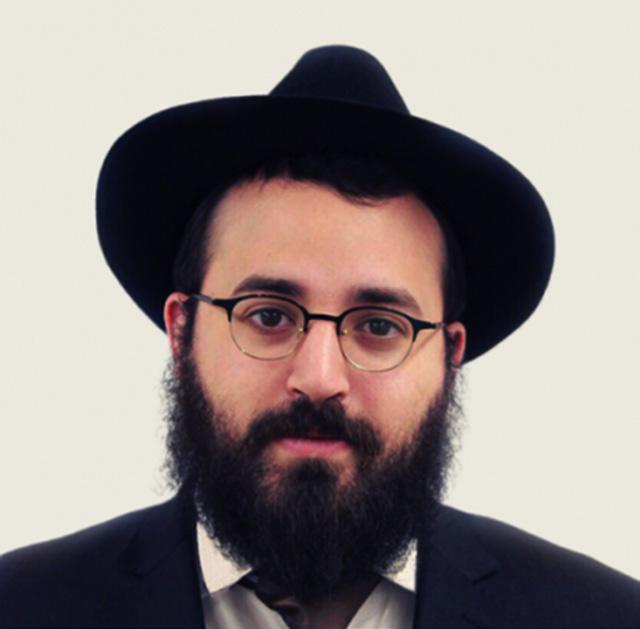
KS: What prepared you the most for your current position at the ~?
RSBL: Due to my job’s rabbinic nature, I believe that my years in yeshiva gave me the foundation needed to do my job properly, specifically, my rabbinic studies at the Central Lubavitch Yeshiva in 770.
KS: What is best thing about working at the ~?
RSBL: It’s not enough to be a rabbi when one is a Rabbinic Coordinator; one must be open to learning other subjects as well – chemistry, mechanics and more. Working at the ~ is an amazing opportunity to broaden one’s views and knowledge.
KS: How would you describe the ~ today?
RSBL: The ~ is a very fine tuned kosher supervision agency that puts kashrus as its very top priority. I wish more people really knew how much knowledge, expertise, and sincere effort the staff at the ~ put in to every product they certify. It really is incredible!
KS: Can you share an interesting experience that you had while working at the ~?
RSBL: Once I visited a company that manufactured sweet beverages.
Generally, when I arrive at a company I try to sit down with the company representatives and have a general discussion of the production and kosher system.
~
Rabbi Sholom Ber Lepkivker
20 www.OK.org
While having this conversation, I asked them if they had any grape juice at their plant and they answered— obviously—in the negative.
Later, when I went to inspect the warehouse, I didn’t find anything problematic at first. Then, I noticed a slightly stained tote at the side of the warehouse. The label on the top was hand written in Russian script, which is quite difficult to decipher and virtually illegible for those who are not familiar with Russian. Thankfully, I’m a native Russian speaker and could read it. The tote label stated “grape juice 2018” (the year this visit was conducted).
Thanks to my knowledge of Russian I was able to take immediate action. This experience taught me that when it comes to kashrus, there is no such thing as being too careful.
What Other People Say
Rabbi Sholom Ber Lepkivker
“ Rabbi Lepkivker is a great asset to the ~ Kosher team. His youthful energy, eagerness to learn, and his knowledge of halacha, coupled with his fluency in several languages, have positioned him as one of our up and coming Rabbinic Coordinators.”
Rabbi Don Yoel Levy
Kashrus Administrator
“ Rabbi Lepkivker is a young kashrus professional and I am certain that with continued hard work and dedication he will, bezras hashem, surely advance and excel. It is a pleasure to work with him and watch him grow.”
Rabbi Levi Marmulszteyn
Rabbinic Manager
“ Rabbi Lepkivker’s knowledge of Halacha and research of industry practices has made him an invaluable resource to ~ Kosher. It is my pleasure to discuss all matters of kashrus with someone of his caliber.”
Rabbi
Rabbinic
Levi Y. Schapiro
Coordinator
“
“
www.KosherSpirit.com 21
“
... I asked them if they had any grape juice at their plant and they answered— obviously—in the negative. Later, when I went to inspect the warehouse ... I noticed a slightly stained tote at the side of the warehouse. The label on the top was handwritten in Russian script, which is quite difficult to decipher and virtually illegible for those who are not familiar with Russian. Thankfully, I’m a native Russian speaker and could read it. The tote label stated “grape juice 2018”.
Pesach Seder The
In the Haggadah recited at the Passover Seder, we say: “Even if we are all wise, all men of understanding, and all know the Torah, it is a mitzvah for us to tell of the exodus from Egypt.” Lisaper, translated as “to tell,” also means “to shine.” The Passover Seder is not meant to be merely a recollection of past events. Instead, it is a time for each of us to relive the experience to the point that we are glowing with the light of the redemption.
For this reason, the Seder is an interactive experience, beginning with a child’s asking of the Four Questions. For the intent is not merely to lecture and tell about how special the night is: the entire evening is about reliving the exodus and we can’t relive an experience unless we get involved. Therefore questions are asked and techniques are employed to attract a child’s interest.
Just as we try to motivate our children to experience redemption, Gd does the same for His children, the Jewish people as a whole. For every Jew is like Gd’s only son and on Pesach, He does what He can to enable us to relive the Exodus, to be freed from any of the influences that confine and constrict us, be they spiritual or material.
What does redemption mean? Is a person who was redeemed any different than he was a moment before his redemption?
Well, physically, he’s the same, but he has a new glow to his eye, a new spring to his step. Internally, he’s brimming with new energy and he has greater spirit and vitality.
The same idea applies on a larger scale. הלוג, the Hebrew word for exile and הלואג, the Hebrew word for redemption share the same letters, but with one difference: הלואג, redemption, has an alef which stands for ףוס ןיא, Gd’s infinity. The difference between exile and redemption is not in the external dimensions of reality; they remain the same. But in a world of redemption, Gdliness is apparent. Though we will still live in a physical world, its material dimensions are not of primary importance; they will be subsumed to its spiritual content.
These concepts may seem a little distant from our reality. After all, we are used to dealing with things that we can see or feel. Gdliness and Redemption may appear above us, concepts that we believe in, but have difficulty relating to.
Pesach gives us a tool to bridge this divide: Matzah , the food we eat on Pesach, is called “the bread of faith.” Implied is that partaking of it gives us the opportunity to internalize and identify with ideas that we would otherwise merely accept on faith.
Looking to the Horizon
The Passover Seder does not merely commemorate the past; it is a future-oriented event. As we say at the very beginning of the Haggadah: “This year, we are here; next year, we will be in Eretz Yisrael. This year, we are servants; next year, we will be free men.’
Although we are looking forward to the redemption of all mankind, this is not a passive experience. We don’t merely
sit back and wait. Instead, every person can have an individual experience of redemption, attuning his- or herself to the mindset that will prevail in that future era. By doing so, he does not change himself alone, he influences the people and the culture around him.
The ultimate Redemption, the era of Mashiach, will be a time when the world rises above the ordinary, natural pattern of existence and lets the inner Gdliness that permeates all being become manifest. Similarly, in the personal realm, redemption means going beyond our ordinary routine and letting our inner Gdly core express itself. As more and more people experience redemption on a personal level, the microcosm will affect the macrocosm and hasten the coming of the era when this awareness will permeate all existence.
The content in this page is produced by Chabad.org, and is copyrighted by the author and/or Chabad.org. If you enjoyed this article, we encourage you to distribute it further, provided that you do not revise any part of it, and you include this note, credit the author, and link to www.chabad.org. If you wish to republish this article in a periodical, book, or website, please email permissions@chabad.org.
CHASSIDIC INSIGHTS 22 www.OK.org
By Rabbi Chaim Fogelman
Ín the Gemara, Pesachim 115b, Shmuel says the matzah is called
(lechem oni) because we say a lot of things on this matzah.
Ín truth we say the Haggadah and Hallel on everything on the ka’arah, not just the matzah. So, why is the recital associated specifically with the matzah?
The Kozhnitzer Maggid says that matzah contains 3 of the 4 foundational elements – earth, fire and water. The air is missing, because the matzah has to be made so quickly. The Kedushas HaLevi connects the four foundational elements of earth, air, fire and water to the four letters of Hashem’s name. We also see 3 of the letters of Hashem’s name in the word matzah, using the code of שב”תא (reversing the letters, so ר=ג ,ש=ב ,ת=א and so on).
מ becomes י
צ becomes ה
And the final ה of Hashem’s name is already in the word הצמ.
Only the vov is missing.
Ín the Zohar it is brought down that the letter vov represents the connection between above and below. The vov corresponds to the voice (air). When the Yidden brought Bikkurim, the possuk says: תרמאו תינעו . Rashi said that “v’anisa” means it needs to be done out loud, so now we understand why there is a minhag to say the Haggadah out loud. When we say the Haggadah out loud, we add the vov of Hashem’s name to the matzah.
NUTRITION
SOUL
www.KosherSpirit.com 23
םחל
ינוע



KOSHER CERTIFICATION ~ Kosher Spirit, 391 Troy Avenue • Brooklyn, NY 11213 718-756-7500 • info@ok.org • www.ok.org Download the Kosher Food Guide app and get the most updated list of the Kosher for Passover products that ~ Kosher certifies. It’s like having a rabbi at your side whenever you go shopping... Is it Kosher for Pesach? KOSHER CER TIFICATION ~ Kosher Spirit, 391 Troy Avenue • Brooklyn, NY 11213 718-756-7500 • info@ok.org • www.ok.org follow us on Twitter @KosherAler ts For the latest in Kosher news: follow us on Facebook facebook.com/okkosher Best wishes for a K osher and Freilichen Pesach from ~ K osher Cer tification Search OK Kosher in the App Store or Google Play store. Search “OK Kosher” on the App Store & Google Play to find our apps













































